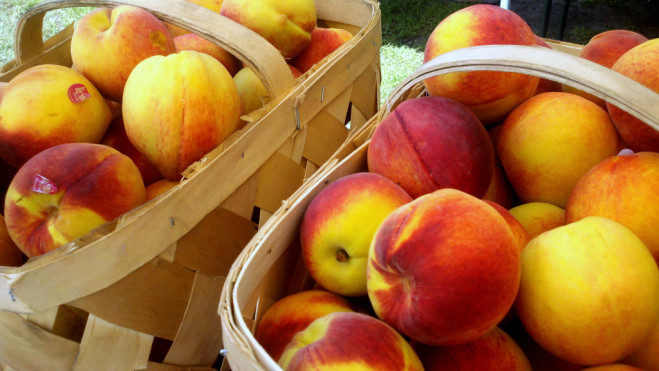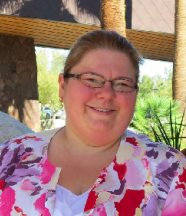For LeBarre, the anecdote underlines a fundamental problem with school lunches: the inability to get fresh food in front of students. Too often, students think of peaches as chopped up bits served in vacuum-sealed, plastic cups. “That,” LeBarre said, “is what we want to change.”
LeBarre began working for OUSD’s nutrition services 15 years ago after finding her job in college food service unsuitable for a new mother. Growing up in Bakersfield, Calif., Lebarre always had a packed lunch to bring to her private Catholic school, but what she found in Oakland’s schools opened her eyes to another possibility.
“I had a sheltered perspective of what families in America go through,” she said. “Here we had kids that didn’t eat all weekend and relied on us for sustenance. How are we in America where children are going hungry and the only place they get food is in school?”
Part of the change LeBarre and her team have been working towards has come in the form of after-school markets. They’ve created 20 markets in needy communities with at least 75 percent of the student population qualifying for free or reduced lunch. Many of the communities have been identified as food desserts, and the markets offer locally grown, organic or pesticide-free produce from small farmers.
“Families are able to buy great produce and we’re able to support local farmers and businesses,” she said. “We’re increasing access for parents, students and their siblings.”
But increasing access and changing what students eat outside the school is only half of what concerns LeBarre. Inside the school is where the real battle is being played out.
LeBarre says one way to change the school food system is to change the places where school food is made.
“Parents just think you change the food on the plate, but it’s more difficult than that,” Zenobia Barlow, an OUSD partner from the Center for Ecoliteracy said. “Facilities are the biggest issue, and it has become an impenetrable obstacle.”
Oakland has 86 schools, and around 30 have cooking kitchens mostly in middle and high schools. Those schools can prepare all the food they need for their kids, but the rest rely on two central kitchens. Originally, the larger of the two kitchens was designed to serve 800 meals a day. Today, it serves 20,000.
What that means is that a lot of food has to be prepared beforehand and then packaged before it’s served to students. Food eaten by students on Thursday was prepared on Tuesday and delivered to the school on Wednesday. Menus aren’t dictated by the needs of students, but by the limitations of the school’s facilities.
“We’re making our own pasta and hand rolling our own enchiladas,” LeBarre said, “but they’re wrapped in plastic, so interest goes away.”
A new, updated central kitchen, along with updates to other school kitchens, could eliminate 80 percent of prepackaged food and make it possible to get fresher, healthier food to students. With that idea in mind, LeBarre went to district officials and sought out the help of Larry Tramutola, a political consultant based in Oakland, in advance of the 2012 electoral season.
Tramutola went to work garnering public and institutional support for Measure J, a bond measure that could raise up to $475 million. By the time election day had come and gone, Tramutola, LeBarre and the rest of their team saw 84 percent of voters say yes to healthy schools and secured $40 million dollars for facilities upgrades incorporated into the district’s master plan.
“Our stars really aligned,” LeBarre said. “Everybody was thinking at the same time. We were able to get the board to approve our ideas of what the central kitchen needed to be. Whatever changes may come, our central kitchen will be built. It’s an integral part of the plan.”
But the project is more than just a new kitchen. Its mission goes well beyond putting good food in students’ stomachs.
“To have an effect on school food, we need the meal program and education linked together,” LeBarre said. “We’ll have everything you need, but also an education center on the campus shared with students, community members and professional development for our staff.”
The land for the new central kitchen in West Oakland will also include a one-and-a-half acre urban farm, ready for field trips to connect students to where their food is coming from and give them an experience of the entire food process.
With the new central kitchen well into the facility development stage, LeBarre couldn’t be happier, but knows there is still more work to be done.
“You’re not just the lunch lady anymore,” LeBarre said. “The more we can align our work with the core functions of education, the more we can break down the barriers between school lunches and schools.
“We can’t solve it all, but we can take care of some physiological needs, and make sure students are thriving through our food program,” she said. “Unless we take care of the whole child, they won’t be academically successful. Part of that is creating healthy schools.”

